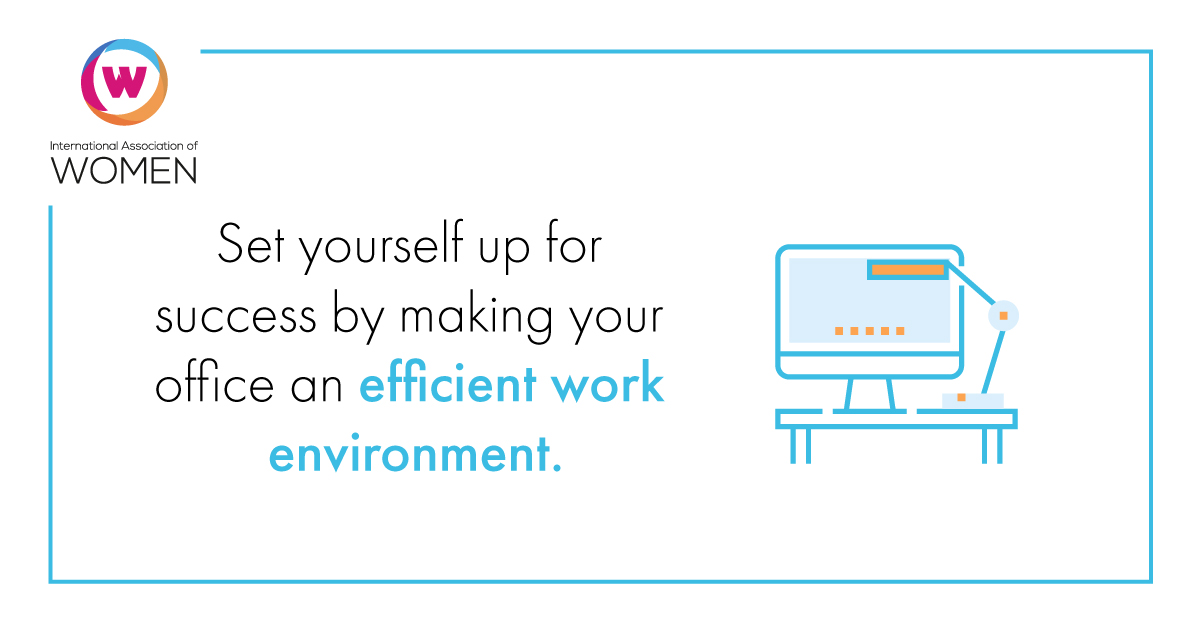Not too long ago, there were two types of people: those with the “Hang in There” poster showing a cat clinging to a tree limb and those with the “I Hate Mondays” grumpy-faced cat poster. Office design has become a little more interesting since then. Here are a few ideas for how to make your office a more productive space — regardless of how you feel about Mondays.
Inspiration, Not Clutter
Before you buy anything, consider what is currently getting in your way. One of the most common hindrances to productivity is everyday clutter. Moving nonessential items out of your workspace will reduce distraction. Replacing dusty, bulky objects with clean, flat, sleek ones will quickly transform any workspace.
Also, studies have shown that adding plants is a great way to increase productivity. Consider simple, bold artwork, a cactus or aloe plant, and stylish utilitarian items — pencil holders and other necessities shouldn’t distract but allow for clear thinking. It may be best to avoid religious or overly sentimental items in the office as, while thought provoking, they will likely not help anyone keep on task.
Light
Most of the time we don’t realize how much influence the amount and color of light we’re exposed to has on our productivity. A white or slightly blue light will keep us more alert, while an orange tone — interpreted as sunset by our brains — will tend to make us sleepy.
If you don’t yet have an office space picked out, consider one with strong natural light. For countless generations before electric light, humans rose with the sun. It’s hardwired in us to be most productive in sunlight.
If you have control of the lighting in your office, consider swapping bulbs. Choose those marked daylight or 6500K for overheads. They are fairly easy to find. Use task lighting for individual areas — it can be a spotlight on your keyboard, notepad, or whatever tools you regularly use. You may be surprised how much this helps both your dexterity and ability to stay on task.

Sit or Stand
Find yourself getting up a lot for no apparent reason? That fourth cup of coffee might be less about staying awake and more about stretching your legs and back. Office desks are notorious for encouraging bad posture and wrist pain. If you can, try to use an adjustable chair that allows you to regulate the height and back position. Your feet should be on the ground, spine straight, head level.
You can also try an adjustable desk. For computer work, especially typing, the elbows should ideally bend at a roughly 90-degree angle and wrists should be almost straight over the keyboard, allowing your fingers to hover over the keys. Too far up or too far down can cause wrist pain. Ask any pianist. Likewise, the monitor should be at eye level so you are looking straight ahead and not down. This will help reduce slouching, which often causes back pain.
If you have room, consider adding a second workspace where you are able to stand. Sometimes just standing up — or a simple change in posture — can invigorate you during an otherwise lethargic hour or two at work. Studies have suggested standing while working can increase productivity by more than 40 percent. On that front, try a treadmill. There are a lot of products out there, and they aren’t cheap, but they could make a big difference in your workday (and maybe waistline).
Share Space
While we’re inclined to picture the most productive employees as those sitting alone and diligently hammering out their work, some studies have shown that sitting with others actually makes you more productive. Consider an open floor plan with fewer walls and more opportunity for collaboration. Former New York City Mayor Michael Bloomberg famously implemented such an open-office plan at City Hall, calling it the bullpen. The measure was met with widespread skepticism at first, but soon became well loved — so much so that his former employees took the same steps at their next places of business. When former Bloomberg counselor Anthony Crowell took over New York Law School, one of his first moves was to start tearing down walls, creating an environment of interaction and idea sharing.
Color
Countless studies have shown the effects of different color schemes on the human brain. Blue is supposedly calming and inspiring, green sparks advanced thinking and imagination, red increases the heart rate and attentiveness, and yellow is an overall stimulant — including for your appetite! But whatever color scheme you choose, don’t feel like you have to overdo it. Just adding an orange accent wall can make an otherwise all-white room feel vibrant and alive. Consider the color of your furniture, including computers, cabinets, and other equipment, as well as any plants, ceiling tiles, or other fixtures in the office. We usually tend toward neutral colors in our homes, but in the office we may want to try the opposite.
If you are stuck with an all-white or neutral color palette, consider adding strategic colors with the artwork and plants suggested above.
Smells
Maybe the subtlest and yet evocative sense we have is smell. Just a slight whiff of a certain perfume, pipe tobacco, or flower can take us back in time to places and people long forgotten. While it can be a touching moment, it isn’t exactly great for productivity! We want to avoid heavy, musty scents in our office. Dustiness, tobacco, cherry-scented cleaning agents, and even dental-office sterility can be annoying. It’s best to go with subtle citrus or pine scents. A hint of lavender can be effective too, but only if it is truly subtle. Avoid cloyingly sweet or overbearing scents. Less is more.
One trick is to have a few scented but unlit candles around! That’s right, don’t light them. It’s the exact opposite of the advice we’d give for your home, where candles should be used, not saved. A candle in the workplace can dramatically worsen the overall air quality, as most offices are enclosed, and may cause allergic reactions in coworkers. If you work alone, however, do whatever makes you more productive, and burn those candles if you want.
What items have you incorporated into your office space to ensure productivity?



